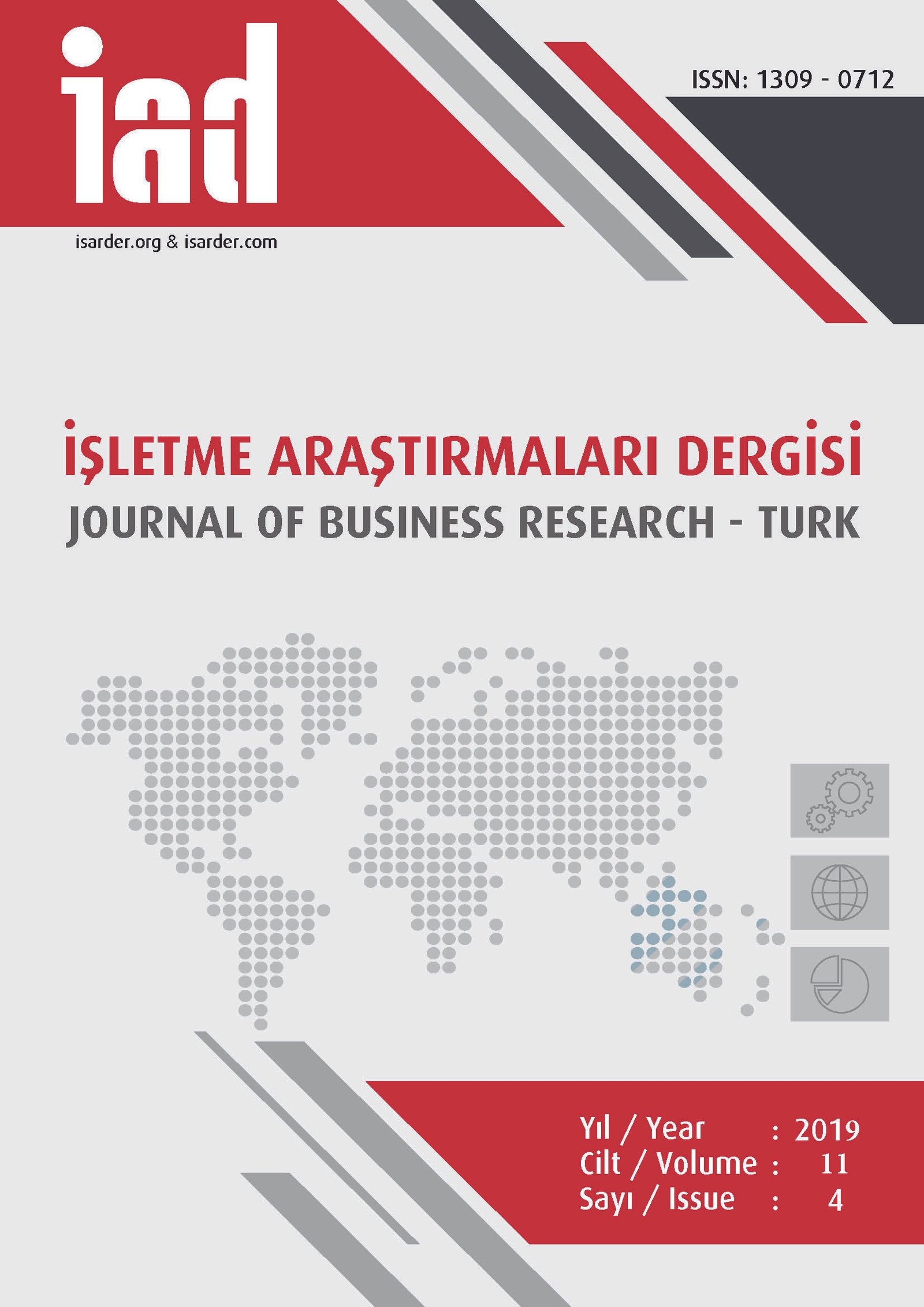Liderlik Kavramının Mükemmellik Modeline Göre İncelenmesi: Karabük Devlet Hastanesi Örneği
Anahtar Kelimeler:
Liderlik- Mükemmellik Modeli- Yapısal Eşitlik AnaliziÖzet
Amaç – Bu araştırmanın amacı, liderlik kavramının EFQM alt boyutları arasındaki bağı bulmak ve hangi boyutun liderlik için önemli olduğunu ortaya çıkarmaktadır. Yöntem – Yapı düzeyi, olgunluk veya sektör seviyelerinden farklı olarak yönetim bilimleri, her kurumun başarıya ulaşabilmesi ve kendi yapısına uygun yönetim sistemini oluşturma nedenlerini gözle görülür bir şekilde ortaya koymaktadır. Bu nedenlere sonuçlar bulmak amacıyla da farklı öneri ve yaklaşımların iyileştirilmesine katkı sağlamaktadır. Bu sistemler, farklı boyutları olan yönetimin bir kısmı ile ilgilenmekte ve bu kısımlara yapılmasını uygun gördüğü özel standartlarla boyutun çerçevesini oluşturmaktadır. Lakin çok boyutlara sahip olan yönetim, işin kendisine ve işe yapan kurumlar veya işletmelere göre farklılık göstermektedir. Dolayısıyla her ölçeğin içinde bulunan ve aynı zamanda farklı sektördeki işletme ve kuruluşların yönetim bakış açılarını sorgulayabilmeleri için kolayca uygulanabilir bir araca ihtiyaç duyulmaktadır. Tam da bu durumda, bu ihtiyaca cevap verecek EFQM Mükemmellik Modeli kolay bir araç olarak ortaya çıkmaktadır. EFQM bu bağlamda liderlik kavramı içinde araştırılması gereken ve alt boyutlarının liderlik ile çağırışım yapması önemlidir. Araştırma Karabük Devlet Hastanesinde çalışan 267 kişiye anket yöntemiyle uygulanmıştır. 158 kişinin anketi yapısal eşitlik analizi ile yorumlanmıştır. Bulgular – Elde edilen bulgulara göre boyutlar arasındaki tüm ikili korelasyon katsayıları istatistiksel olarak anlamlı, pozitif yönlü ve yüksek düzeyde bulunmuştur. En yüksek korelasyon katsayısı boyut c ile boyut d arasında (0,994), en düşük korelasyon katsayısı boyut a ile boyut e arasında (0,831) hesaplanmıştır. Bu sonuçlara göre liderlik boyutlarından herhangi birisinde gerçekleştirilecek olan algı iyileştirmesi diğer boyutlara da pozitif yönlü ve yüksek oranda algı iyileşmesi olarak yansıyacağı şeklinde yorum yapılabilir. Tartışma – Kurumun yönetim sisteminin geliştirilmesi ve sürekli olarak iyileştirilmesi boyut incelendiğinde ise a boyutuna benzer sonuç çıktığını söylenebilir. ‘’ Yönetim çalışanlarla açık ve dürüst iletişimi yaklaşımı uygulamaktadır.’’ İfadesinin boyut içinde liderlik üzerinde en büyük etkiye sahip olduğunu görülmektedir. Kurumun yönetim sisteminin geliştirilmesi ve sürekli olarak iyileştirilmesi boyutunda kurumun yönetim sisteminin geliştirilmesi ve sürekli olarak iyileştirilmesi boyutu incelendiğinde ise a boyutuna benzer sonuç çıktığını söylenebilir. ‘’ Yönetim çalışanlarla açık ve dürüst iletişimi yaklaşımı uygulamaktadır.’’ İfadesinin boyut içinde liderlik üzerinde en büyük etkiye sahip olduğunu görmekteyiz. Paydaşlarla etkileşime girme boyutuna bakıldığında ‘’ Yönetim, yapıcı eleştiriye açıktır.’’ ve ‘’Yönetim, tedarikçileri uzun dönem ortağı olarak ele almaktadır.’’ İfadeleri diğer ifadelere göre daha düşük etkilere sahip olmakla beraber ‘’Karar alırken bu kararların içsel ve dışsal etkilerini ve yansımalarını dikkate almaktadır.’’ ifadesi bu boyutun en yüksek etkiye sahip ifadesi olarak belirlenmiştir. Personelin mükemmellik kültürünü geliştirme boyutu incelendiğinde ifadelerin etkileri hemen hemen aynı seviyede olduğu görülmüştür. ‘’ Yönetim, hedeflere ulaşma konusunda çalışanları desteklemektedir.’’ İfadesi boyutun en yüksek etkiye sahip ifadesi olarak söylenebilir. Personelin mükemmellik kültürünü geliştirme boyutu incelendiğinde ifadelerin etkileri hemen hemen aynı seviyede olduğu görülmüştür. ‘’ Yönetim, hedeflere ulaşma konusunda çalışanları desteklemektedir.’’ İfadesi boyutun en yüksek etkiye sahip ifade olduğu görülmüştür. Örgütsel değişimi tanımlama ve öncülük etme boyutunda da diğer boyutlara benzer olarak birbirine yakın etkilerde bulunan ifadeler yer almaktadır. ‘’ Örgütte değişimi tetikleyen içsel ve dışsal faktörleri doğru algılamaktadır.’’ İfadesi boyutun en yüksek etkiye sahip ifade olarak görülmektedir.
İndir
Yayınlanmış
Nasıl Atıf Yapılır
Sayı
Bölüm
Lisans

Bu çalışma Creative Commons Attribution-NoDerivatives 4.0 International License ile lisanslanmıştır.





